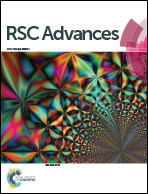Sulforaphene inhibits hepatocellular carcinoma through repressing keratin 8 and activating anoikis†
Abstract
Sulforaphene (SFE), a natural isothiocyanate, extracted from radish seeds is forcefully associated with cancer prevention. Nonetheless, the mechanism responsible for SFE-induced cell death is not understood. In the present study, one of the anti-cancer mechanisms of SFE was clarified in hepatocellular carcinoma. SFE exerted cytotoxicity in a concentration-dependent manner and led to apoptotic cell death in HepG2 and SMMC7721. After SFE treatment, a large number of spherical cells were suspended in the medium, and the phenomenon was not associated with EMT. We speculated that the phenomenon should be connected with anoikis. A proteomics study revealed that levels of some proteins including Keratin 8 (KRT8) and Enolase1 (ENO1), etc. were changed in SFE treated cells compared to an untreated control. We had further confirmed that SFE reduced the expression of Keratin 8 and Keratin 18 (K8/18) typically co-expressed as the primary keratin pair with western blotting. What's more, K8/18 loss increased the level of Fas and decreased the level of the inhibitory protein cFLIP. Interestingly, we showed that SFE-treated cells lost cell–matrix interactions without inducing metastasis and increased the apoptosis ratio in a suspension culture model as well as the K8/18 siRNA-treated cell. Taken together, these findings suggest that keratin 8 plays a role in mediating SFE-induced Fas-related death in hepatocellular carcinoma. And our findings present the first evidence that SFE decreased the resistance to anoikis in liver cancer cell lines.


 Please wait while we load your content...
Please wait while we load your content...